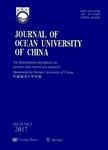版权所有:内蒙古大学图书馆 技术提供:维普资讯• 智图
内蒙古自治区呼和浩特市赛罕区大学西街235号 邮编: 010021

作者机构:College of Marine ScienceShanghai Ocean UniversityShanghai 201306China National Engineering Research Center for Oceanic FisheriesShanghai 201306China The Key Laboratory of Sustainable Exploitation of Oceanic Fisheries ResourcesMinistry of EducationShanghai 201306China Department of Applied EcologyCenter for Marine Sciences and TechnologyNorth Carolina State UniversityMorehead CityNC 28557USA
出 版 物:《Journal of Ocean University of China》 (中国海洋大学学报(英文版))
年 卷 期:2025年第24卷第1期
页 面:169-181页
核心收录:
基 金:supported by the National Key Research and Development Program of China(No.2019YFD0901404)
主 题:Trachurus murphyi simulations suitable habitat area stock assessment errors Southeast Pacific Ocean
摘 要:Pelagic fish are the most abundant species in upwelling regions,contributing 25%of total global fisheries ***-driven changes in the marine environment play a crucial role in their population *** Chilean jack mackerel(Trachurus murphyi)as an example,this study conducted simulations to quantify the impacts of environmental variations on the stock assessment.A habitat-based surplus production model was developed by integrating suitable habitat area into the model parameters carrying capacity(K)and intrinsic growth rate(r),with a suitable habitat area serving as the proxy for the environmental conditions for Chilean jack mackerel in the Southeast Pacific *** dynamics of Chilean jack mackerel stock and fisheries data were simulated,and four assessment models with different configurations were built to fit simulated data,with or without considering environmental *** results indicated that Joint K-r model,which integrated both parameters with the suitable habitat area index,outperformed the others by coming closest to the‘true population *** habitat variations in the estimation model tended to overestimate biomass and underestimate harvest rate and reference *** observation and process error,the results were estimated with bias,while FMSY is relatively *** research illustrates the importance to consider random errors and environmental influences on populations,and provides foundation guidelines for future stock assessment.